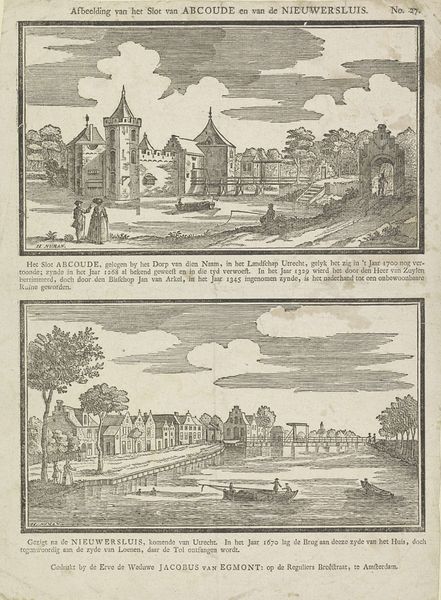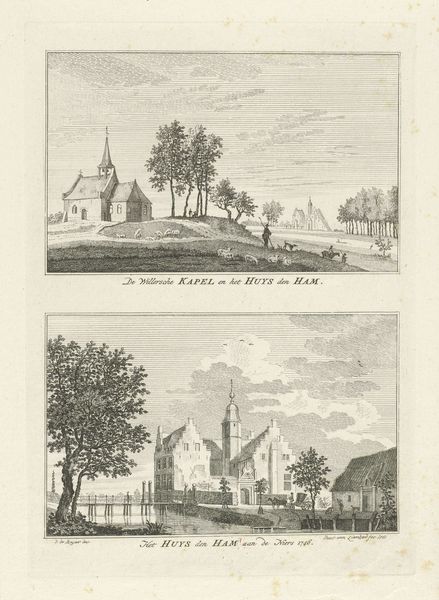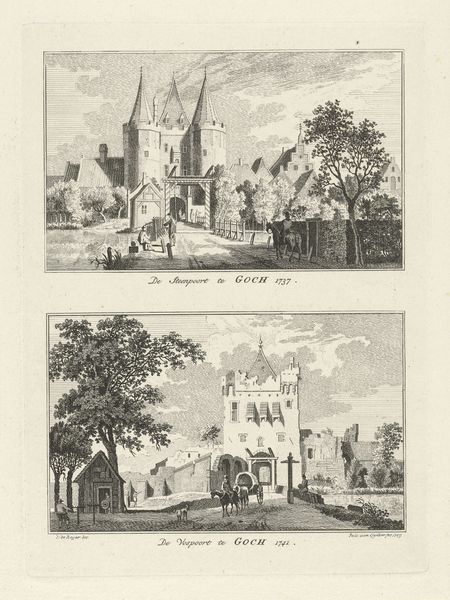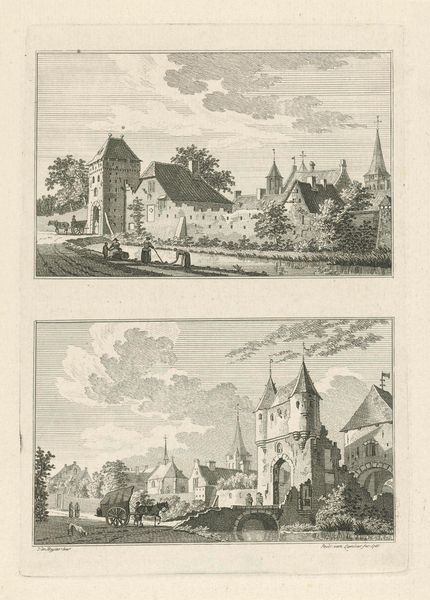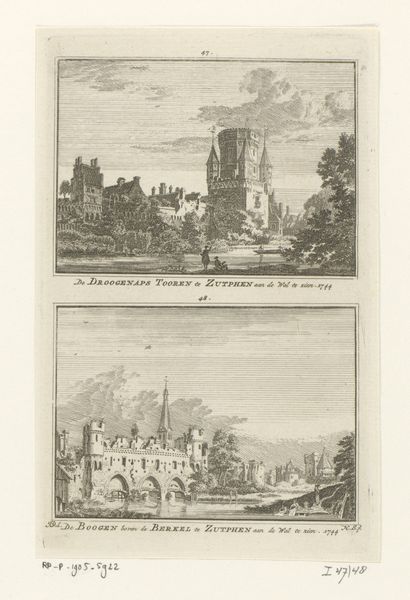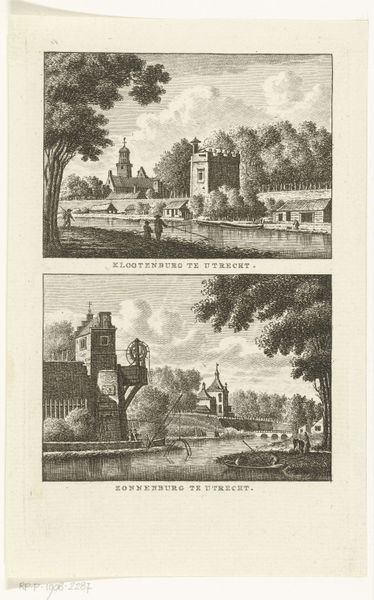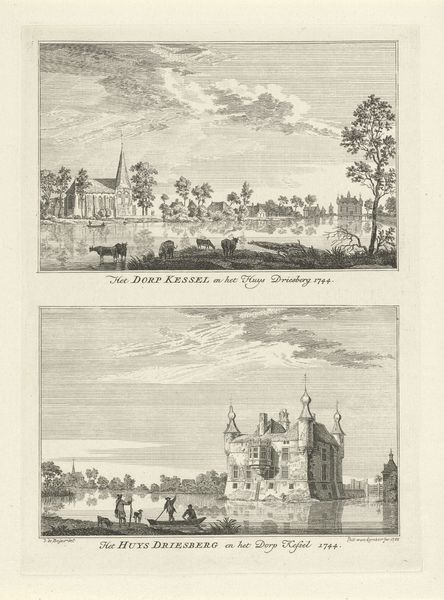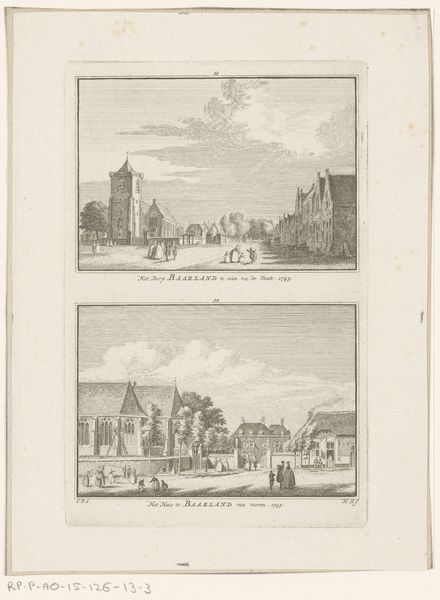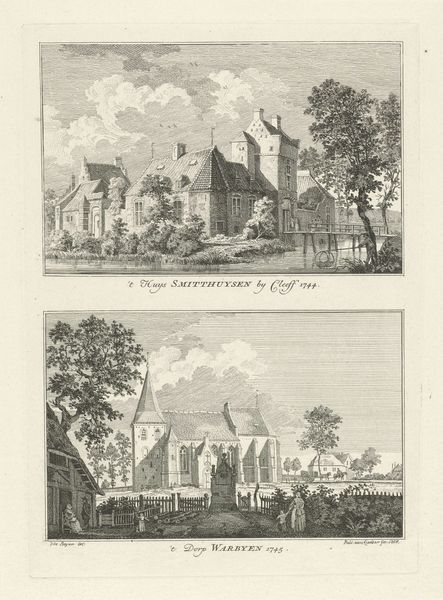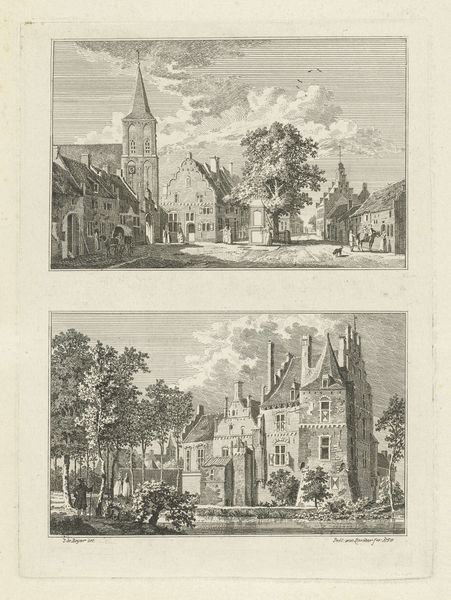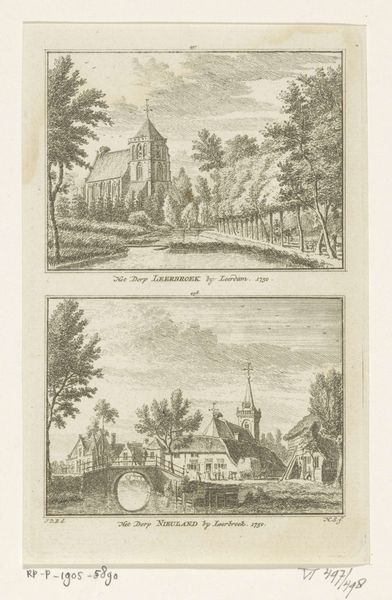
drawing, print, engraving
#
drawing
#
baroque
#
dutch-golden-age
# print
#
landscape
#
cityscape
#
engraving
Dimensions: height 165 mm, width 110 mm
Copyright: Rijks Museum: Open Domain
Hendrik Spilman created this copper engraving, "Two Views of Zutphen," in 1744. Dominating the upper scene, the imposing tower—a clear symbol of civic pride—reaches skyward. The tower, in its essence, represents not just architectural height but also a connection to the heavens, an aspiration towards the divine. This very form echoes through history, from the Tower of Babel to the minarets of Islam, each a beacon, a focal point for communal identity. In the lower scene, the Mastpoort gate stands, a guardian of Zutphen's maritime access and commerce. The tower's form carries echoes of ancient lighthouses, guiding ships safely, or even the protective ziggurats of Mesopotamia. We see how humanity's psychological need for landmarks—to feel secure and oriented in the world— manifests across cultures and epochs, reminding us of our shared, deeply rooted emotional responses to such symbols. These vertical assertions speak to a profound, often subconscious, yearning for stability. The visual language and cultural memory of these architectural symbols persist through time.
Comments
No comments
Be the first to comment and join the conversation on the ultimate creative platform.
